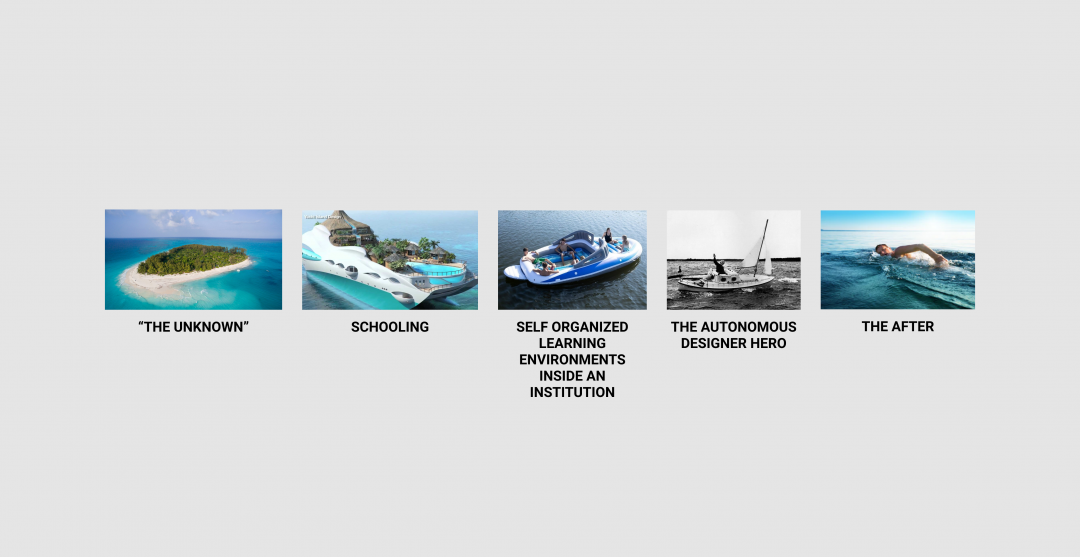A promise is something that is put forward. It involves intent and expectation. It is a performative speech act, an utterance that does what it says. It is fulfilled when an intended future, now become past, finally aligns with the present. That’s when the speech act, following J. L. Austin, meets its condition of felicity.
Could a general promise of design education (from now on simply “the Promise”) be identified? What would it look like? Would that relate to the present of education or to the future of work? What are the forces that shape it? How is it fulfilled and by whom? Who has the authority to verify its fulfillment? And who has uttered it in the first place?
Educational promises are not unilateral but reciprocal. It is not just the promisor organization, the School, in cooperation with or in opposition to the market and society, that is supposed to fulfill it (“We’ll give you knowledge, skills and a space to develop them”), but the individual promisee as well, the Student, as they guarantee effort and participation (“I’ll make it worthwhile”).
In education things get complicated because the promise is not unambiguously formulated – there is no contract – and yet it looms over the conventional promisee, the student, functioning both as encouragement and threat. It can be rooted in notions like success, career, self-realization, ambition, autonomy, etc. But it can also aim at redefining them. It is affected by class, race and gender. It comes in multiple shapes and forms and yet it can be understood as a whole. Does the promise resemble a vow, an oath, a resolution, a mission? Is it as nebulous and frail as the American dream? In the design field things get even more complicated, as the field itself is in perennial reconfiguration – it experiences a constant identity crisis, some might say.
To focus on the promise means bridging preexisting societal conditions, – such as employability, housing availability, mobility, welfare, discrimination, privilege, etc. – with socialized professional and personal aspirations – lifestyle, institutional roles, legacies of crafts, research trends, urgent matters, subcultures, notions of virtuosity, etc. In other words, the promise is built on some premises, both materialistic and idealistic ones. When there is no full alignment between promise and premises, the promisee feels like they are compromising. From this a question arise: who is defaulting when the promise is not fulfilled? What can be claimed as compensation?
Recognizing the promise means foregrounding intimate confessions, atmospheric peer pressures, individual anguishes, tacit dissatisfactions, concrete limitations, but also creating hacks, finding new paths, imagining different ways of living and working. It means reflecting on the design field linguistic tics and automatisms (e.g. working “at the intersection of”, or building a personal brand on Instagram) in order to forge new languages and approaches. In other words, it means designing new alignments of personal goals, collective aspirations and societal conditions.
